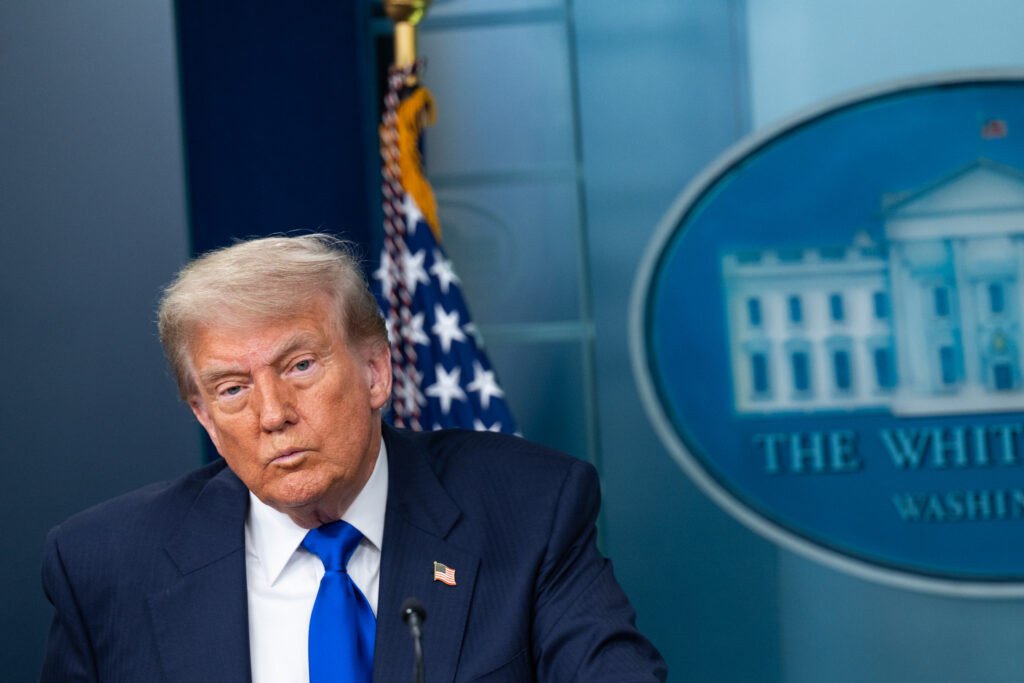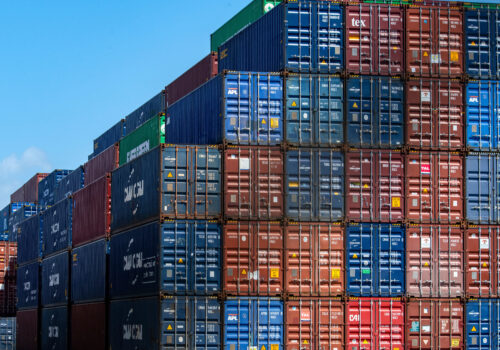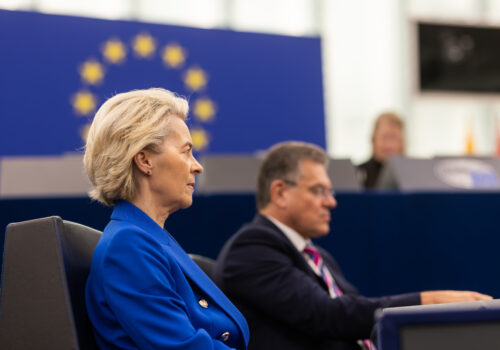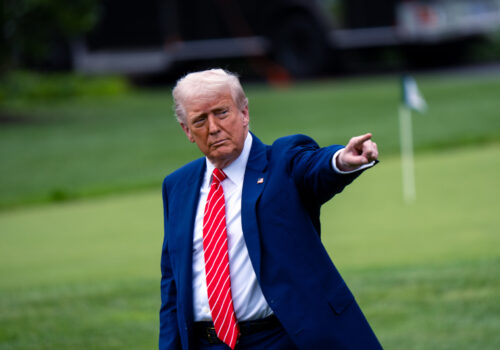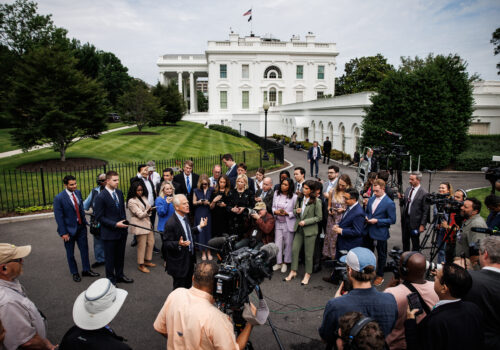WHAT’S NEXT
First came “Liberation Day.” Now, after Independence Day, comes a day of reckoning for Donald Trump’s tariff regime. On July 9, a ninety-day pause on the US president’s “reciprocal” tariffs will expire. What will Trump do then? With the global economy on tenterhooks as the world awaits the answer, we turned to our top tariff watcher for his take on what might happen. Rather than reacting to breaking news, we’re doing something different in this special edition of the newsletter and aiming to anticipate it.
TODAY’S EXPERT INSIGHT COURTESY OF
- Josh Lipsky (@joshlipsky): Chair of international economics and senior director of the Atlantic Council’s GeoEconomics Center, and former International Monetary Fund advisor
The backstory
- While Trump temporarily scaled back his Liberation Day tariffs, don’t lose sight of the fact that he’s still presiding over a US economy that is “much more protectionist” than it was just three months ago, Josh advises, “with the possibility that even higher rates are on their way.”
- The numbers don’t lie: Liberation Day caused the average effective US tariff rate on imports to jump from around 3 percent to over 25 percent, the highest level for the United States in over a century, Josh notes. Today, the rate is approximately 15 percent, owing in part to sectoral tariffs on items like cars and steel. Every country still has faced a 10 percent baseline tariff during the pause, and Josh doesn’t anticipate that minimum tariff going away no matter what happens next week.
- “Despite recent legal rulings that could limit some of Trump’s emergency authorities, it looks like the president retains a range of authorities to continue his highly aggressive trade policy,” Josh points out, adding that Trump has promised new tariffs on a range of products such as pharmaceuticals.
- With all this as backdrop, Josh expects Trump to make three types of announcements over the coming week as his tariff deadline approaches.
Sign up to receive rapid insight in your inbox from Atlantic Council experts on global events as they unfold.
1. Deals
- Josh reminds us that the Trump administration promised “ninety deals in ninety days” after volatility in the bond market induced the delay in the imposition of US tariffs.
- “We didn’t get anything like that,” he adds, but “we did see an agreement with the United Kingdom and what could best be described as a temporary cease-fire with China,” with 30 percent tariffs on Chinese imports for now and “a tentative agreement for China to resume exports of rare earths while negotiations continue toward a larger trade deal.”
- So who’s next in line for a deal? “India and Japan are the two major economies closest to an announcement,” Josh tells us. “India is seemingly in a better position, as negotiators have extended their stay in DC this week, and Japan in a worse position, in part due to complications with how to handle auto tariffs and agriculture.”
2. Passes
- The Trump administration has sent mixed signals about whether the United States will delay tariff hikes beyond July 9. “The idea,” Josh says, “is that countries that are ‘negotiating in good faith’ will not be subject to higher tariffs on top of the existing 10 percent while negotiations continue. There may be small-scale agreements in principle announced, but as we’ve all been reminded in the past three months, real trade deals are complex and take time.”
- So who’s most likely to get a pass? It appears that “Vietnam and South Korea fall squarely into this category” Josh observes, as “countries that are negotiating with the Trump administration but where a deal is not imminent.”
- “Expect many countries in the world to get an Independence Day pass,” perhaps until Labor Day, Josh adds.
3. Punishment
- But not every country may get a deal or delay, and Josh predicts that Trump will also “make an example” of particular trade partners and impose some “snapback” tariffs. The Trump administration may be developing a “new formula” that “is less than the Liberation Day rates but higher than the current 10 percent baseline,” he says.
- So who’s poised for punishment? Josh believes that, while these trade talks can always take an abrupt U-turn, the European Union (EU) is the most probable candidate. “The EU has always been in a difficult position given the complexities of the trade relationship and the political equities back in Europe,” he says, making it hard for European Commission President Ursula von der Leyen “to appear as conciliatory as” the likes of UK Prime Minister Keir Starmer.
- “It seems both sides are still far away from consensus on even the scope of negotiations,” Josh tells us, as the EU has prepared a list of retaliatory tariffs.
- It all adds up to more of the uncertainty that has been upending global trade for months now. “While markets have celebrated the fact that Trump hasn’t followed through on his most extreme tariffs,” Josh says, “they should remember the classic investing adage: Past performance is no guarantee of future results.”
Further reading
Thu, Jun 26, 2025
To retaliate, or not to retaliate, that is the question for the EU on Trump’s tariffs
New Atlanticist By Frances Burwell
Striking back at US tariffs is unlikely to help the EU achieve its goals of a more stable and open trading partnership with the United States.
Fri, Jun 6, 2025
Even as courts step in, Trump still has plenty of tariff options. US trading partners should intensify negotiations.
New Atlanticist By
Section 301 may entail more work for the White House, but it could provide a relatively straightforward pathway to broad-based tariffs.
Fri, May 30, 2025
Experts react: How the world is responding to the courtroom drama around Trump’s tariffs
New Atlanticist By
Several recent court rulings have complicated the US president's plans to impose sweeping tariffs—and US trading partners are watching.
Image: US President Donald Trump listens to a question at a press briefing with U.S. Attorney General Pam Bondi and U.S. Deputy Attorney General Todd Blanche in the James S. Brady Press Briefing Room in the White House in Washington, DC on Friday, June 27, 2025. President Trump addressed Iran, the Big, Beautiful Bill and tariffs. Photo by Annabelle Gordon/Sipa USA via Reuters Connect.
